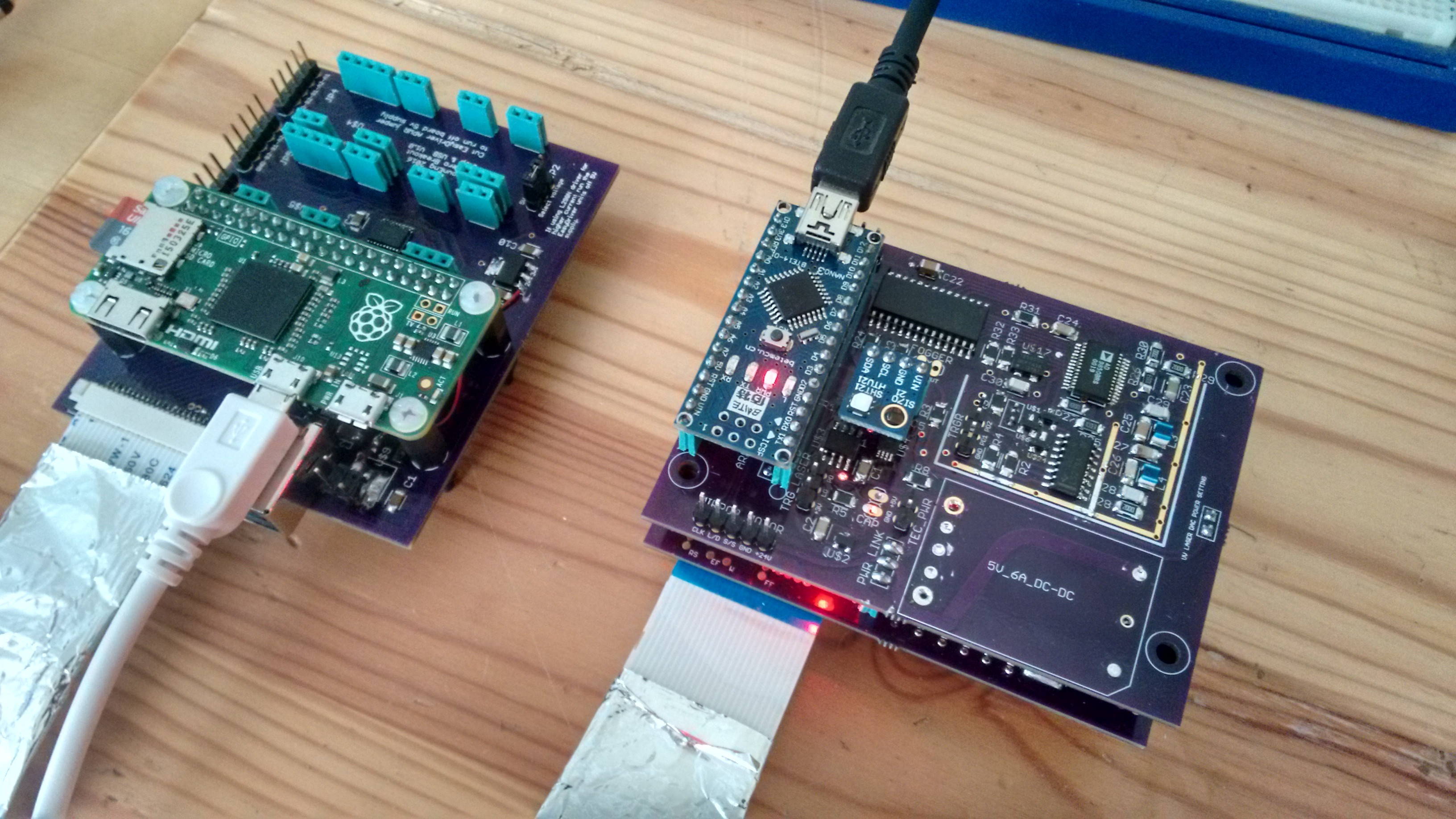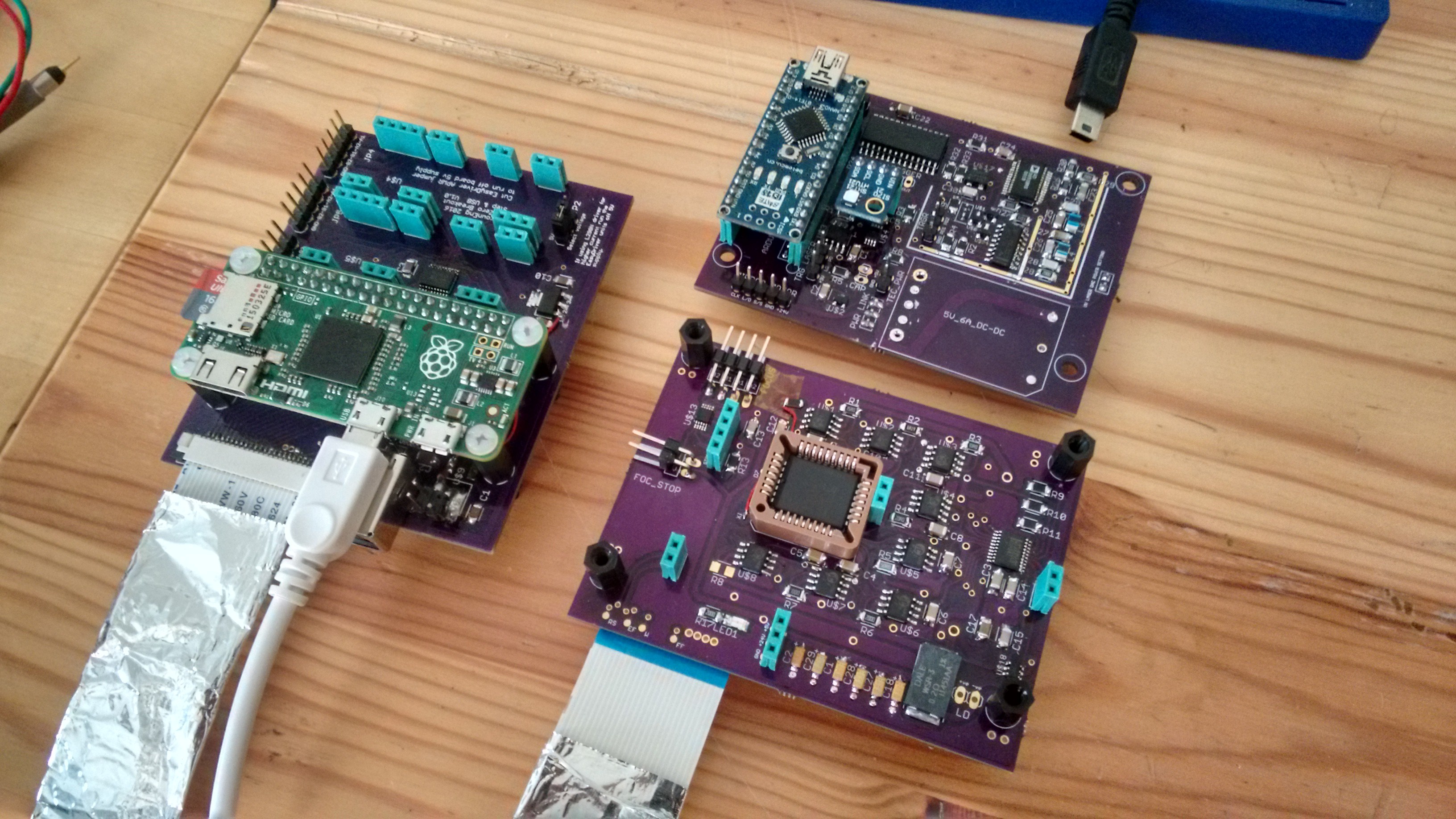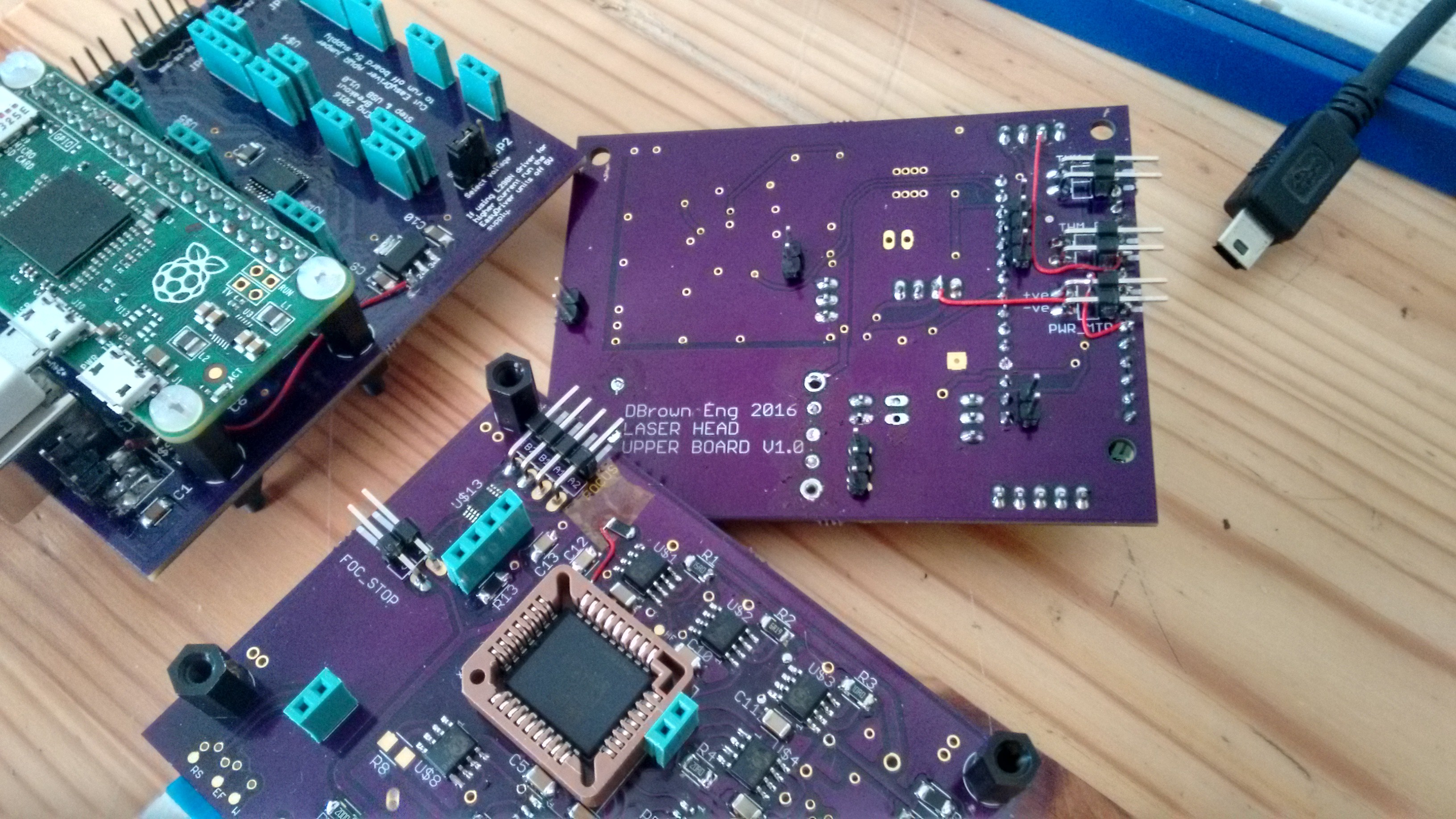The prototype PCBs for the print head arrived, and were duly populated; so the process of working out where I made the mandatory mistake on each of them was! so;
Lower board needed one pull up and one pull down on the FIFO, not a problem, as I had put in test points to allow for this.
The upper board I had followed the pinout/spec sheet for the Arduino Nano 2.3 which had the A0-A7 pins in the reverse order to the current v3.0, not such a huge problem, but meant the I2C lines were in the wrong location. The DC-DC board was also not playing, and as I've decided to use 12v rather than 24v for the mirror motor (what i've used for testing) it needs replacing as he minimum was 18V input (an expensive mistake, but the converter unit should come in handy in the future).
Cue the micro red fixing wire, and Stanley knife for track cutting
 Upper head board has the I/O headers for TEC, trigger laser, mirror motor controls and variable frequency generator for the FIFO readout clock. This last is to ensure a hardware based readout system for the FIFO to ensure that laser strip aligns (within 1 clock wavelength) with the adjacent one.
Upper head board has the I/O headers for TEC, trigger laser, mirror motor controls and variable frequency generator for the FIFO readout clock. This last is to ensure a hardware based readout system for the FIFO to ensure that laser strip aligns (within 1 clock wavelength) with the adjacent one.
As can be seen the arduino is back feeding power to the lower board when on USB connection, not ideal situation, blocking diode to be grafted in. Similarly for the data lines of the FIFO when the rPiZero is connected - not something I expected to happen.

Pi board and upper & lower laser head boards, including x8 iC-HKB laser diode switches with power tuning DAC and current monitoring ADC. The focus system micro stepper motor driver is on the upper left corner of the lower board.
The x8 separate laser switches are needed because the current control is set by a resistor and tuning voltage, which it is not feasible to modulate a single unit to achieve spike free operation, with 8bit resolution. With the present setup each current level can be tuned via the x8 DAC using both a power photodiode and current monitoring ADC, prior to the print process.

Re-wired I2C lines, with the devices now reporting as expected on the bus.
 David Brown
David Brown
Discussions
Become a Hackaday.io Member
Create an account to leave a comment. Already have an account? Log In.